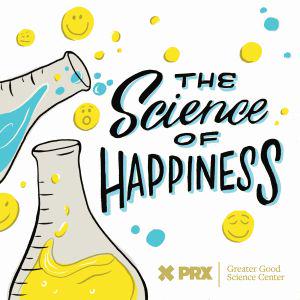An art-form powerful enough to prescribe — from ancient traditions to modern neuroscience, we uncover how music, including lullabies, function as a form of medicine.Summary: Music has a unique ability to calm, heal, and bring people together, and lullabies are one of the earliest ways we experience this connection. In this episode, we explore how music affects the brain, reduces stress, and strengthens bonds between caregivers and children. Through science and personal stories, we reflect on the deep emotional power of lullabies and their role in both everyday life and moments of challenge. From ancient traditions to modern research, we uncover why lullabies remain a universal source of comfort.Scroll down for a transcription of this episode. Today’s Guests: ALEXIS CARIELLO is a social worker who was prescribed music to help manage her perinatal anxiety. DR. DANIEL LEVITIN is a neuroscientist, musician, and bestselling author of the books, Music as Medicine: How We Can Harness Its Therapeutic Power and I Heard There Was a Secret Chord: Music As Medicine.Follow Dr. Levitin on IG: https://www.instagram.com/daniellevitinofficialBringing Lullabies into Everyday LifeYou don’t need to be a professional musician to bring the healing power of music into your caregiving routine. Here are some simple ways to incorporate lullabies into your daily life:
Sing, Even If It’s Just for You: Whether you hum a tune while rocking a child to sleep or sing in the shower, music can help regulate emotions and ease stress.
Create a Caregiving Playlist: Curate a selection of calming songs that bring comfort and connection.
Write Your Own Lullaby: Personalizing a song can be a deeply meaningful way to express love and support.
Share the Experience: Singing together can strengthen bonds, whether with a child, a partner, or a classroom of students.
Our Caring for Caregivers series is supported by the Van Leer Foundation, an independent Dutch organization working globally to foster inclusive societies where all children and communities can flourish. To discover more insights from Van Leer Foundation and others on this topic, visit Early Childhood Matters, the leading platform for advancing topics on early childhood development and connecting diverse voices and ideas across disciplines that support the wellbeing of babies, toddlers and caregivers around the globe.Music has the power to uplift, soothe, and connect. What lullabies, songs, or musical rituals bring you comfort? We’d love to hear from you! Email us at
[email protected] or message us on Instagram @ScienceOfHappinessPod.Help us share The Science of Happiness! Leave us a 5-star review on Apple Podcasts and share this link with someone who might like the show: https://tinyurl.com/2p9h5aapTranscription: https://tinyurl.com/49svzn4v

